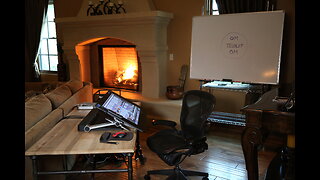American Victory - 02/21/2024
The Victory ship was a class of cargo ship produced in large numbers by North American shipyards during World War II to replace losses caused by German submarines. They were a more modern design compared to the earlier Liberty ship, were slightly larger and had more powerful steam turbine engines, giving higher speed to allow participation in high-speed convoys and make them more difficult targets for German U-boats. A total of 531 Victory ships were built in between 1944 and 1946.
The design was an enhancement of the Liberty ship, which had been successfully produced in extraordinary numbers. Victory ships were slightly larger than Liberty ships, 14 feet (4.3 m) longer at 455 feet (139 m), 6 feet (1.8 m) wider at 62 ft (19 m), and drawing one foot more at 28 feet (8.5 m) loaded.[2] Displacement was up just under 1,000 tons, to 15,200. With a raised forecastle and a more sophisticated hull shape to help achieve the higher speed, they had a quite different appearance from Liberty ships.
To make them less vulnerable to U-boat attacks, Victory ships made 15 to 17 knots (28 to 31 km/h), 4 to 6 knots (7.4 to 11.1 km/h) faster than the Libertys, and had longer range. The extra speed was achieved through more modern, efficient engines. Rather than the Libertys' 2,500 horsepower (1,900 kW) triple expansion steam engines, Victory ships were designed to use either Lentz type reciprocating steam engines (one ship only, oil fired), Diesel engines (one ship) or steam turbines (the rest, all oil fired) (variously putting out between 6,000 and 8,500 hp (4,500 and 6,300 kW)). Another improvement was electrically powered auxiliary equipment, rather than steam-driven machinery.
To prevent the hull cracks that many Liberty ships developed—making some break in half—the spacing between frames was widened from 30 inches (760 mm) to 36 inches (910 mm), making the ships less stiff and more able to flex. Like Liberty ships, the hull was welded rather than riveted.
The VC2-S-AP2, VC2-S-AP3, and VC2-M-AP4 were armed with a 5-inch (127 mm)/38 caliber stern gun for use against submarines and surface ships, and a bow-mounted 3-inch (76 mm)/50 caliber gun and eight 20 mm cannon for use against aircraft. These were manned by United States Navy Armed Guard personnel. The VC2-S-AP5 Haskell-class attack transports were armed with the 5-inch stern gun, one quad 40 mm Bofors cannon, four dual 40 mm Bofors cannon, and ten single 20 mm cannon. The Haskells were operated and crewed exclusively by U.S. Navy personnel.
The Victory ship was noted for good proportion of cubic between holds for a cargo ship of its day. A Victory ship's cargo hold one, two and five hatches are a single rigged with a capacity of 70,400, 76,700, and 69,500 bale cubic feet respectively. Victory ship's hold three and four hatches are double rigged with a capacity of 136,100 and 100,300 bale cubic feet respectively. Victory ships have built-in mast, booms and derrick cranes and can load and unload their own cargo without dock side cranes or gantry if needed.
The world-class SS American Victory was built in 55 days and was delivered to the U.S. War Shipping Administration by the California Shipbuilding Yard on May 24, 1945. After serving in WWII, and the Korean and Vietnam Wars, the ship went through a $2.5 million restoration in June 1985. In October, 1996, Captain John C. Timmel learned the SS American Victory was earmarked for scrap if not acquired for memorial purposes. Feeling that a museum would be feasible in Tampa, FL and that it would act as a purveyor or maritime memories, the ship was towed from Virginia to its permanent location in the Channelside District in downtown Tampa. Currently, the SS American Victory is only one of 3 fully-functioning ships in the country.
#victoryship #ww2 #usmerchantmarine #americanvictory #tampabay
-
 1:47:01
1:47:01
Real Coffee With Scott Adams
6 hours agoEpisode 2492 CWSA 06/01/24
33.7K34 -
 2:08:10
2:08:10
LFA TV
7 hours agoEP 47: Miles Guo Trial Special with Special Guests - Truth, Betrayal, and Fox Hunt | WHISTLE BLOWERS 6.01.24 12pm EST
34K12 -
 1:13:59
1:13:59
Tactical Advisor
5 hours agoVault Room Tour/Unboxing- Vault Room Live Stream
26.8K2 -
 1:11:28
1:11:28
The Squad
12 hours agoArsenal's Huge Summer🚨Olise to Man Utd DEAL✅ Osimhen to Arsenal or Chelsea☑️ UCL Final Preview
39K7 -
 56:23
56:23
Trumpet Daily
1 day ago $1.10 earnedCohen Is Free to Lie and Steal, but Trump Is Guilty of Something - Trumpet Daily | May 31, 2024
36.4K55 -
 8:26
8:26
MichaelBisping
1 day agoBISPING CHOKES OUT STEVE-O! | JACKASS STAR PUT TO SLEEP BY UFC CHAMP! *FULL VIDEO*
52.6K13 -
 20:00
20:00
Clownfish TV
23 hours agoGoogle Hurt ITSELF in Its Confusion!
61.6K58 -
 24:20
24:20
Brewzle
1 day agoWe Went Unicorn Bourbon Hunting In Louisville, KY
61K8 -
 35:39
35:39
Degenerate Jay
1 day agoGoldenEye 007 Saved James Bond - Movie Review
56.9K7 -
 14:54
14:54
Mr Reagan
1 day ago $0.46 earnedWE ARE ALL MAGA NOW
47.6K109